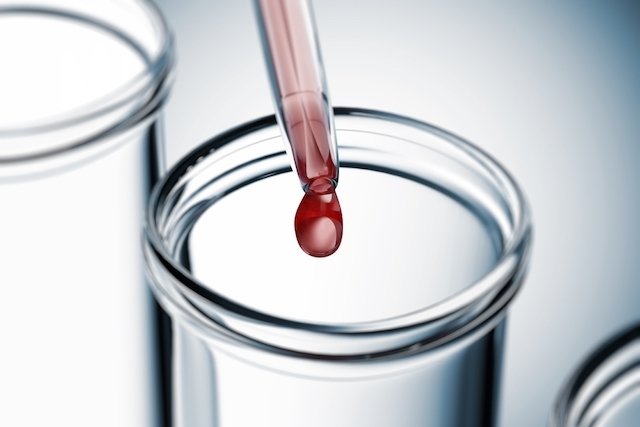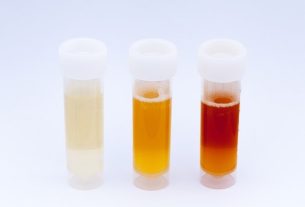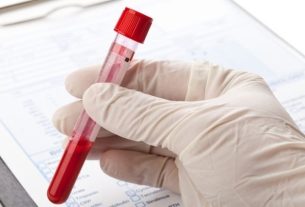Prothrombin time or PT is a blood test that assesses the blood’s ability to clot, that is, the time needed to stop bleeding, for example.
Therefore, the prothrombin time test is used whenever frequent bleeding or bruising occurs to try to find the cause of the problem, as well as when there are suspicions of liver problems, also requesting the measurement of TGO, TGP and GGT, for example.
Prothrombin, also known as coagulation factor II, is a protein produced by the liver and when activated, it promotes the conversion of fibrinogen into fibrin, which, together with platelets, forms a layer that prevents bleeding. Thus, prothrombin is an essential factor for blood clotting to occur. Understand how clotting happens.

Reference values
The reference values for prothrombin time are:
- TP: 10 to 14 seconds, depending on the laboratory, reagent used and equipment;
- Prothrombin Activity (AP): between 70 and 100%, which may vary according to the laboratory, reagent used and equipment.
In addition to TP, the INR, which aims to standardize results worldwide, which makes it possible to more accurately assess the development of diseases and the effect of using anticoagulant medications, for example. Therefore, the INR value for healthy people should vary between 0,8 e 1. However, if oral anticoagulants are being used, the value must be between 2 and 3, depending on the disease that led to the need for treatment with this type of medication.
How to calculate INR
The calculation of the INR, also called RNI, is done by the laboratory taking into account the reagents used. To calculate the INR, the following factors are necessary:
- Prothrombin time (PT);
- Normal mean prothrombin time (NPMR);
- International Sensitivity Index (ISI), which is provided by the manufacturer of each lot of thromboplastin reagent.
The INR calculation is made using the following formula: INR = (TP/TMPN) ISI.
What does the result mean
The result of the prothrombin time test may be altered due to different causes, therefore, whenever there are changes, the doctor may order new tests to be able to identify the correct cause and start treatment. Some of the most common causes include:
High prothrombin time
High TP is when the time to stop bleeding is longer than the reference value, which can happen due to:
- Use of anticoagulants;
- Change in intestinal flora;
- Unbalanced diet;
- Liver diseases;
- Vitamin K deficiency;
- Clotting problems, such as hemophilia;
Furthermore, some medications such as antibiotics, corticosteroids and diuretics can also alter the value of the test, and it is therefore advisable to inform the doctor about all the medication you are using.
Low prothrombin time
Low TP is when the time to stop bleeding is shorter than the reference value, so that clotting happens very quickly. Therefore, although bleeding is rarer and stops quickly, there is a greater risk of clot formation that can lead to a heart attack or stroke.
Some of the causes that can cause this change include:
- Use of vitamin K supplements;
- Excessive consumption of foods with vitamin K, such as spinach, broccoli or liver;
- Use of estrogen tablets, such as contraceptive pills.
In these cases it may be necessary to start using anticoagulants or heparin injections until the cause of the change is identified. After that, the doctor will recommend the most appropriate treatment.
Bibliography
- VASCONCELOS, Rosângela B. Coagulogram: hemostasis: coagulation mechanisms and laboratory evaluation. 2022. Disponível em: <https://dspace.uniceplac.edu.br/bitstream/123456789/1204/1/Coagulograma%20-%20hemostasia%20-%20mecanismos%20de%20coagula%C3%A7%C3%A3o%20e%20avalia%C3%A7%C3%A3o%20laboratorial.pdf>.
- MINISTRY OF HEALTH. Laboratory Diagnosis Manual for Hereditary Coagulopathies and Platelet Diseases. 2016. Available at: <https://bvsms.saude.gov.br/bvs/publicacoes/manual_diagnostico_coagulopatias_hereditarias_plaquepatias.pdf>. Accessed on 12 Dec 2022
- BIOTECHNOLOGY – ADVANCED BIOTECHNOLOGY. Protrombina (TP). 2018. Available at: <https://epimed.com.br/wp-content/uploads/2020/04/ProtrombinaTP.pdf>. Accessed on 12 Dec 2022

Sign up for our newsletter and stay up to date with exclusive news
that can transform your routine!
Warning: Undefined array key "title" in /home/storelat/public_html/wp-content/plugins/link-whisper-premium/templates/frontend/related-posts.php on line 12
Warning: Undefined array key "title_tag" in /home/storelat/public_html/wp-content/plugins/link-whisper-premium/templates/frontend/related-posts.php on line 13



